The ARM vs x86 Wars Have Begun: In-Depth Power Analysis of Atom, Krait & Cortex A15
by Anand Lal Shimpi on January 4, 2013 7:32 AM EST- Posted in
- Tablets
- Intel
- Samsung
- Arm
- Cortex A15
- Smartphones
- Mobile
- SoCs
Cortex A15: RIABench
The RIABench story isn't any different from the other tests, although peak power consumption is slightly lower for the Cortex A15 here. The gap between it and Atom/Krait remains quite large. The big leap in performance does come at a real cost in power consumption.
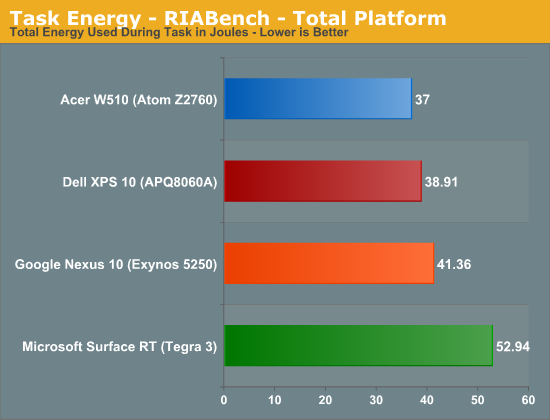
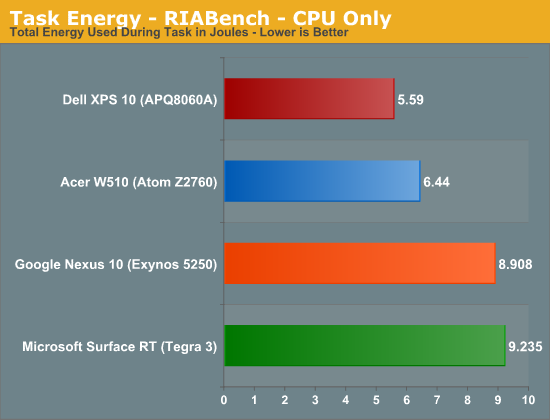
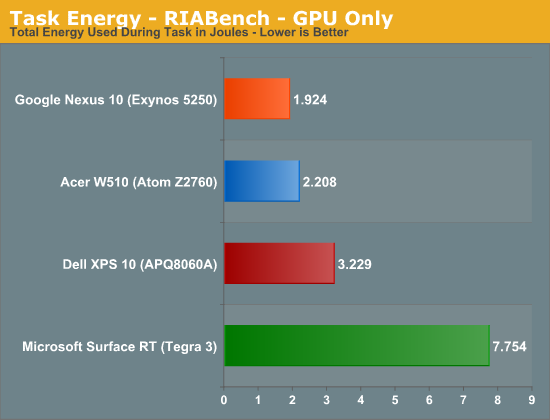
RIABench - Max, Avg, Min Power
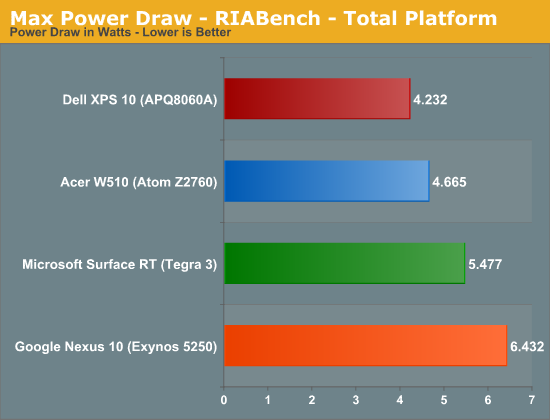
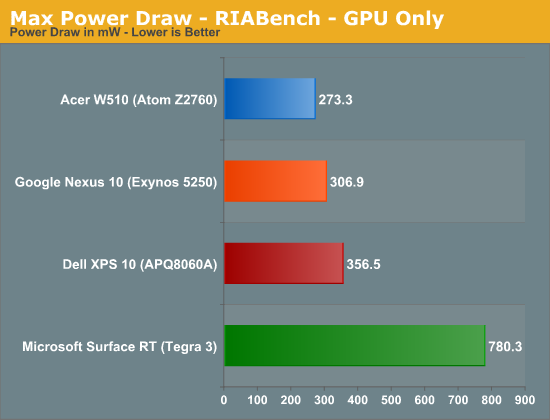
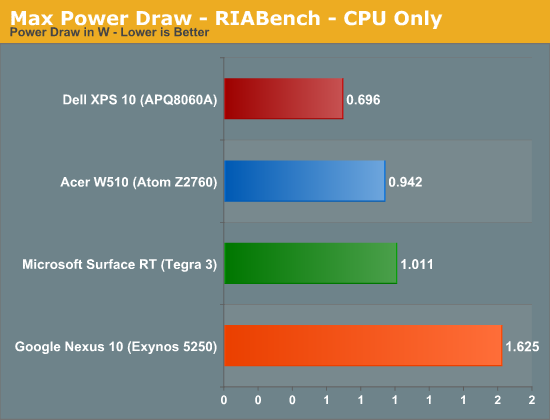
Average Power

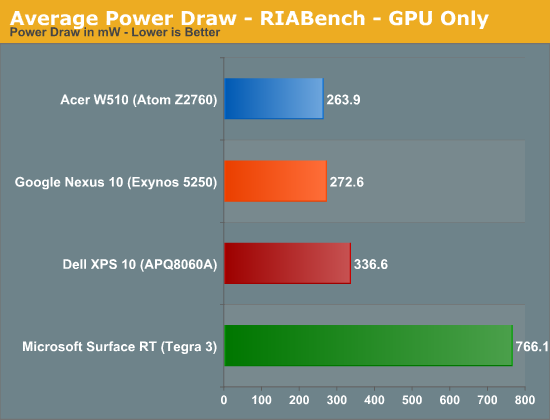
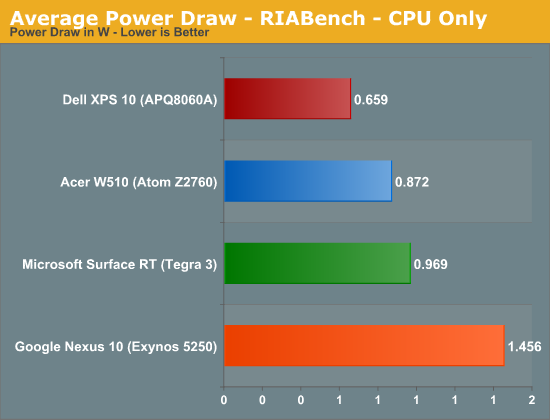
Minimum Power
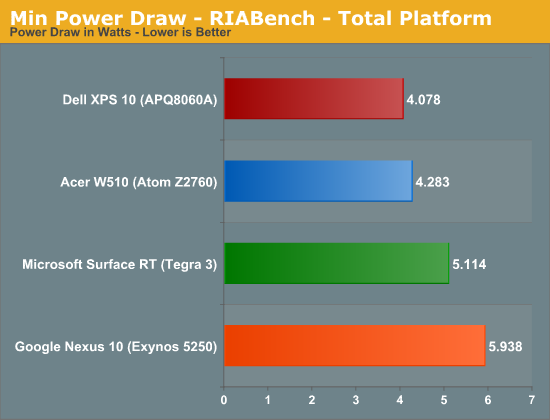
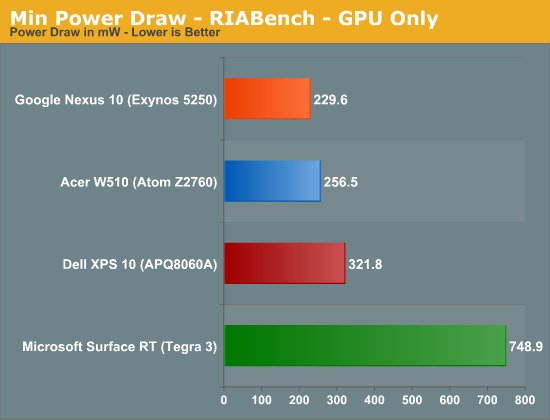




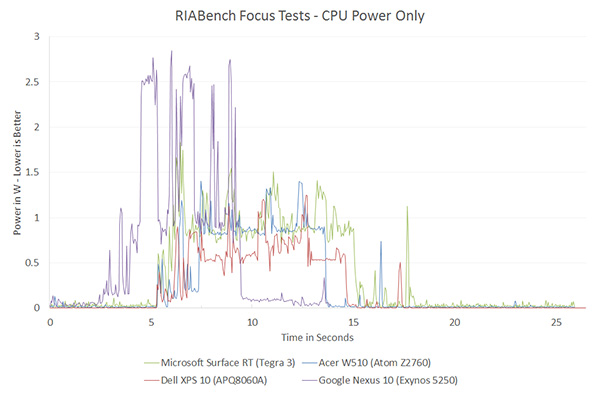
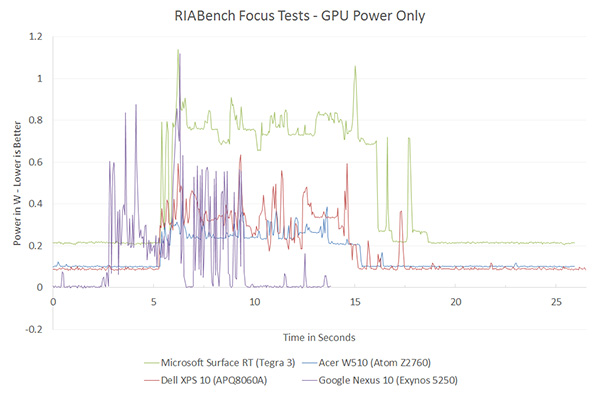








140 Comments
View All Comments
metafor - Friday, January 4, 2013 - link
It matters to a degree. Look at the CPU power chart, the CPU is constantly being ramped from low to high frequencies and back.Tegra automatically switches the CPU to a low-leakage core at some frequency threshold. This helps in almost all situations except for workloads that constantly keep the CPU at above that threshold, which, if you look at the graph, isn't the case.
That being said, that doesn't mean it'll be anywhere near enough to catch up to its Atom and Krait competitors.
jeffkro - Saturday, January 5, 2013 - link
The tegra 3 is also not the post powerful arm processor, intel obviously chose it to make atom look better.npoe1 - Wednesday, January 9, 2013 - link
From one of Ananad's articles: "NVIDIA recently revealed it was doing something similar to this with its upcoming Tegra 3 (Kal-El) SoC. NVIDIA outfitted its next-generation SoC with five CPU cores, although only a maximum of four are visible to the OS. If you’re running light tasks (background checking for email, SMS/MMS, twitter updates while your phone is locked) then a single low power Cortex A9 core services those needs while the higher performance A9s remain power gated. Request more of the OS (e.g. unlock your phone and load a webpage) and the low power A9 goes to sleep and the 4 high performance cores wake up."http://www.anandtech.com/show/4991/arms-cortex-a7-...
jeffkro - Saturday, January 5, 2013 - link
A15 currently pulls to much power for smartphone but it makes for a great tablet chip as well as providing enough horse power to power basic laptops.djgandy - Friday, January 4, 2013 - link
The most obvious thing here is that PowerVR graphics are far superior to Nvidia graphics.Wolfpup - Friday, January 4, 2013 - link
Actually no, that isn't obvious at all. Tegra 3 is a two year old design, on a 2 generations old process. The fact that it's still competitive today is just because it was so good to begin with. It'll be nessisary to look at the performance and power usage of upcoming Nvidia chips on the same process to actually say anything "obvious" about them.Death666Angel - Friday, January 4, 2013 - link
According to Wikipedia, the 545 is from January '10, so it's got its a 3 year old now. The only current gen thing here is the Mali. The 225 is just a 220 with a higher clock, so it's about 1.5 to 2 years old.djgandy - Friday, January 4, 2013 - link
And a 4/5 year old atom and the 2/3 year+ old SGX545 aren't old designs?Look at the power usage of Nvidia. It's way beyond what is acceptable for any SOC design. Phones from 2 years ago used far less power on older processes than the 40nm T3! Just look at GLbenchmark battery life tests for the HTC One X and you'll see how poor the T3 GPU is. In fact just take your Nvidia goggles off and re-read this whole article.
Wolfpup - Friday, January 4, 2013 - link
Atom's basic design is old, the manufacturing process is newer. Tegra 3 is by default at the biggest disadvantage here. You accuse me of bias when it appears you're actually biased.Chloiber - Tuesday, January 8, 2013 - link
First of all it's still 40nm.Second of all: you mentioned the battery benchmarks yourself. Go look at the Nexus 4 review and look how the international version of the One X fares. Battery life on the T3 One X is very good, if you take into account that it's based on 40nm compared to 28nm of the One XL and uses 4 cores.